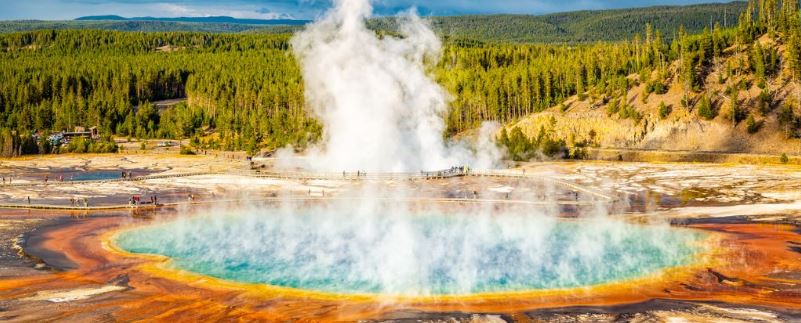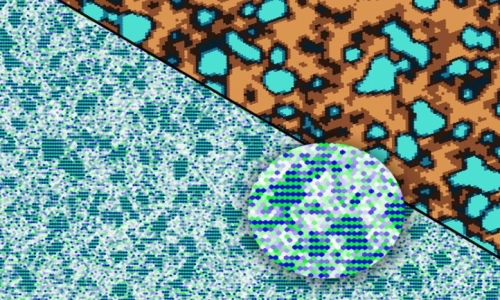


 3:0:18
3:0:18  2024-07-31
2024-07-31  1537
1537

It's been nearly a century since scientists discovered single-celled organisms capable of spewing methane into the environment.
While these microscopic cousins to bacteria occupy a variety of extreme habitats – under kilometers of ice, among the hot sands of deserts, near hydrothermal vents in the deep sea, and within landfills and wastewater – they have all belonged to the same superphylum within the Archaea kingdom, called Euryarchaeota.
It turns out, they are not alone.
Around ten years ago, scientists working around oil fields and hot springs uncovered DNA from undescribed microorganisms that suggested they might produce methane gas. Unlike every other 'methanogen' known to science since 1933, these microbial suspects didn't belong to Euryarchaeota.
"All we knew about these organisms was their DNA," says microbiologist Roland Hatzenpichler from Montana State University.
"No one had ever seen a cell of these supposed methanogens; no one knew if they actually used their methanogenesis genes or if they were growing by some other means."
Now, two different teams of researchers, one working in China and another in the US, have managed to grow these microbes in the lab, verifying they do generate methane.
Two of the methane-producing prokaryotes were found swimming in the hot springs of Yellowstone National Park in the United States. Each belongs to the phylum Thermoproteota, which is a different branch to Euryarchaeota.
One of the microbes Hatzenpichler and his colleagues cultured belongs to the archaeal group Methanomethylicia, which is found in a diversity of environments around the globe. The other belongs to Methanodesulfokora, which is mostly confined to hot springs and the deep ocean.
In experiments, both groups thrived in oxygen-less environments by converting methanol into methane.
Half a world away from Yellowstone, a different team of scientists led by China's Biogas Institute of the Ministry of Agriculture and Rural Affairs and Wageningen University in the Netherlands also stumbled upon a novel 'methanogen' from the Thermoproteota phylum.
They found Methanosuratincolia in an oil field in China, and after years of work, the team found that the microorganism's energy metabolism was closely linked to the production of methane.
"Our findings confirm that the diversity of methanogens expands beyond the classical Euryarchaeota," the team concludes in their paper, which was jointly released with research from Montana State.
Methanogens are responsible for producing the majority of methane on planet Earth, far more than volcanic activity. Given how globally widespread some of these single-celled organisms are, researchers suspect they are crucial factors in our planet's methane emissions and carbon cycle.
Overlooked for decades, there's still so much we don't know about them. For instance, do microbes in the Thermoproteota phylum always exhale methane? Or do they do so only when present in extreme environments, like hot springs or the deep ocean, where oxygen is scarce?
"My best bet is that they sometimes grow by making methane, and sometimes they do something else entirely, but we don't know when they grow, or how, or why," says Hatzenpichler.
"We now need to find out when they contribute to methane cycling and when not."
Reality Of Islam |
|

A tiny robo

By applying

Stanford, C
 9:3:43
9:3:43
 2018-11-05
2018-11-05
10 benefits of Marriage in Islam
 7:5:22
7:5:22
 2019-04-08
2019-04-08
benefits of reciting surat yunus, hud &
 9:45:7
9:45:7
 2018-12-24
2018-12-24
advantages & disadvantages of divorce
 11:35:12
11:35:12
 2018-06-10
2018-06-10
 6:0:51
6:0:51
 2018-10-16
2018-10-16
 2:13:43
2:13:43
 2022-05-27
2022-05-27
 7:45:39
7:45:39
 2018-06-21
2018-06-21
 12:10:56
12:10:56
 2022-11-17
2022-11-17
 8:30:23
8:30:23
 2022-03-03
2022-03-03
 12:47:1
12:47:1
 2022-12-20
2022-12-20
 4:2:19
4:2:19
 2022-10-10
2022-10-10
 1:34:8
1:34:8
 2022-02-01
2022-02-01
 5:41:46
5:41:46
 2023-03-18
2023-03-18
| LATEST |